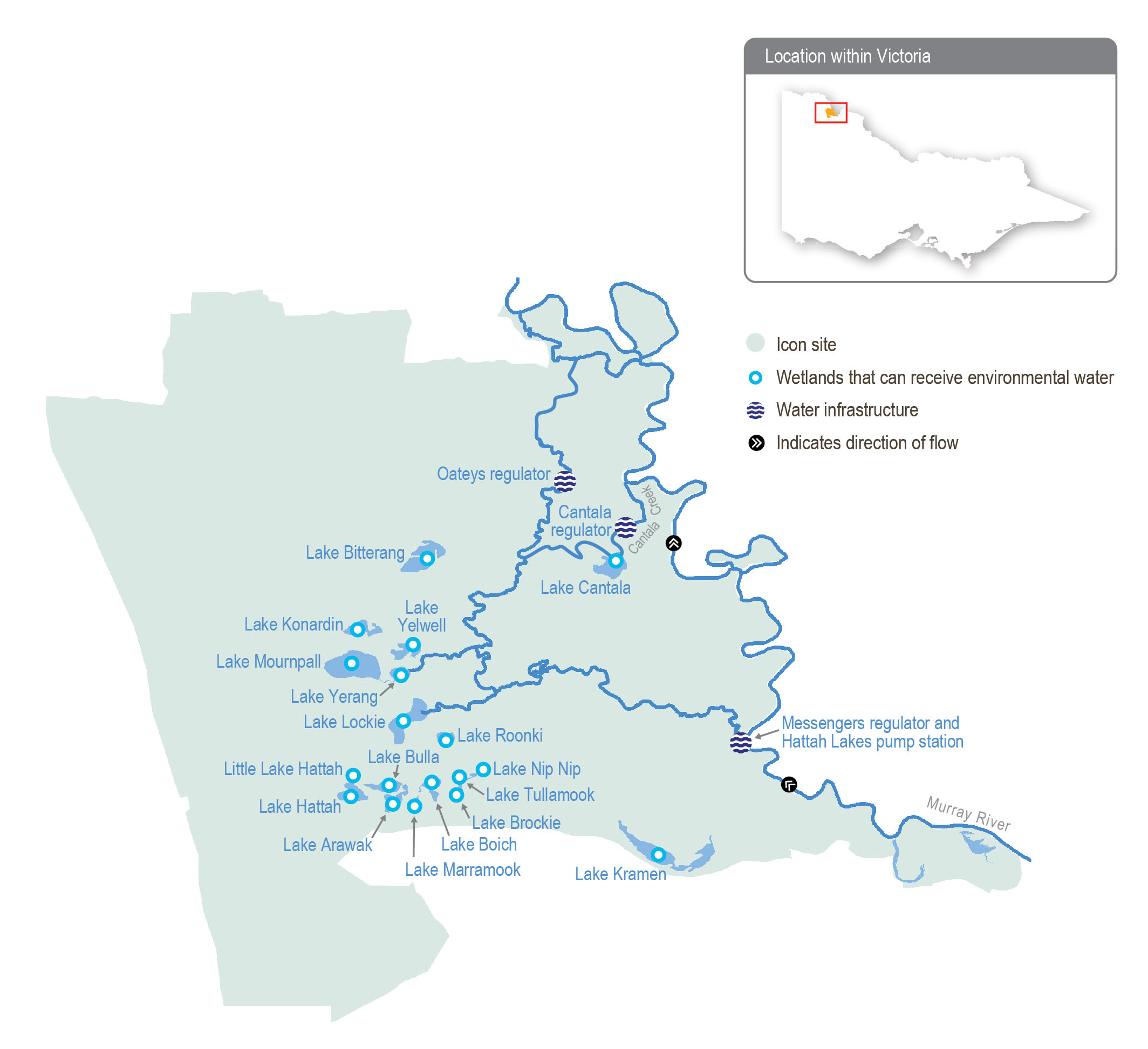The ecology of the Hattah Lakes and the surrounding floodplain is strongly influenced by the flooding regimes of the Murray River. The system fills when there is high flow in the Murray River, and some lakes hold water for several years after floods recede. Regulation of the Murray River has significantly reduced the frequency and duration of small to medium-sized natural floods in the Hattah Lakes system. Over time, this has degraded vegetation communities and reduced the diversity and abundance of animals that use the vegetation and wetlands for habitat and food.
The Hattah Lakes complex can be broadly divided into the southern Hattah Lakes, which contain permanent to semi-permanent wetlands, and the higher-elevation northern Hattah Lakes, which are mostly episodic wetlands.
The Messenger, Oateys and Cantala regulators allow water to flow between the Murray River and the Hattah Lakes. When the flow in the Murray River is about 26,000 ML per day, water begins to flow through Messengers regulator into Chalka Creek and through the Hattah Lakes complex. A permanent pump station can deliver up to 1,000 ML per day to the southern Hattah Lakes through Chalka Creek. The regulators and pump station are used in combination with several small constructed levees to deliver a pattern of flooding to the lakes system that is recommended to improve environmental outcomes. Lake Kramen is in the south-east area of Hattah-Kulkyne National Park and is disconnected from the main Hattah Lakes complex. The Hattah Lakes pump station can deliver up to 145 ML per day to Lake Kramen. New infrastructure proposed under the Victorian Murray Floodplain Restoration Project will allow water to reach additional wetlands and floodplain areas in the northern Hattah Lakes.
